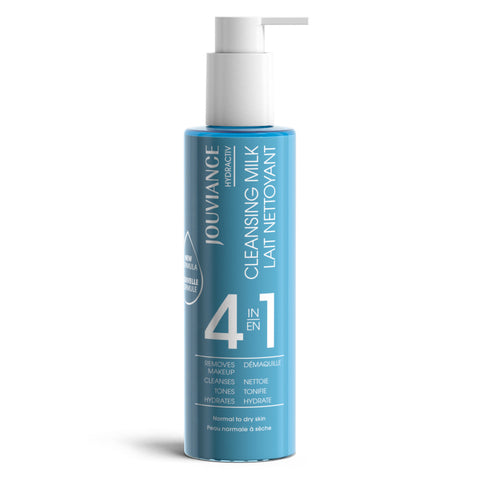Resulting from genetic, hormonal and environmental factors, every skin is unique, but generally falls into one of the following four categories: Dry, Oily, Combination or Normal. What characterizes these skin types? How do you know which products are right for your skin type? In this practical guide, we'll teach you to understand your own skin type and help you pick the right Jouviance products to meet your needs.
Oily Skin
Oily skin is the result of over-activity of the sebaceous glands, which are responsible for the production of an oily substance called sebum. Oily skin can be caused by genetics and hormones, but it is also often caused by environmental factors such as stress and sun exposure that activate the body's production of sebum.
How to recognize oily skin:
This skin type is commonly oil-prone to touch and may have shinier areas, especially on the forehead and nose, where the most enlarged pores are located. In many cases, oily skin can be prone to acne or repeated blackheads.
Our experts' recommendations:
- Removing makeup and thoroughly cleansing your skin morning and night is an essential step for all skin types, but is especially important for oily skin to avoid clogging your facial pores. Cleanse your face morning and night with a foam, preferably.
- Incorporate hydroxy acids into your routine.
- Exfoliate your skin, but don't overexfoliate. It is recommended to exfoliate your skin once or twice a week. Exfoliating too often could result in excessive oil production.
- Don't forget to moisturize your skin! Oily skin needs as much hydration as dry skin, only the choice of ingredients will be influenced by the objective of sebum regulation.
Suggested products for oily ski



Dry Skin
Associated with aging, although dry skin can be simply genetic or a reaction to external changes (such as temperature changes or certain medications).
How to recognize dry skin:
Unlike oily skin, dry skin often has very narrow skin pores and lower sebum production. Dry skin tends to feel tight after cleansing due to a lack of moisture in the top layer of cells; this sensation is sometimes accompanied by dry spots, areas of the face or body where the skin feels rougher.
Our experts' recommendations:
Dry skin needs deep hydration.
- Use a moisturizer formulated with ceramides and omega to help retain water in the skin while adding moisture.
- Avoid thermal shock: rinse your skin with warm water and cover your skin well during winter activities, for example.
Suggested products for dry skin
Combination skin
Combination skin is the most common type of skin. It is frequently observed and especially in people exposed to urban pollution or experiencing hormonal changes.
How to recognize combination skin:
If you notice that your skin becomes oily in some areas and dry or flaky in others, this may be a sign of combination skin. You may experience combination skin in different seasons. For instance, you may have oily areas on your forehead and nose in the summer, but dry areas around your mouth in the winter and occasional acne breakouts.
Our experts' recommendations:
- If you have combination skin, choose a non-comedogenic moisturizer that is appropriate for your skin type. These products are designed specifically for combination or oily skin and help regulate sebum production while keeping dry areas of the face hydrated and comfortable.
- Tailor your treatments to the areas of your face. For example, if your T-zone (forehead and nose) is more oil-prone, apply a detoxifying mask topically, while the rest of your face's drier skin can be soothed with a moisturizing mask.
Suggested products for combination skin
Now that you’re familiar with all skin types, analyze your face in a mirror. Look at your skin's texture, finish, pores, resistance and irregularities... Can you tell what’s yours?
It’s important to remember that the skin on your face can change over time due to hormonal fluctuations or aging. It is therefore important to pay attention to these changes and adapt your products and habits accordingly.
Once your skin type is identified, you can move on with the next step: adopting a skincare routine that meets your needs!
Let our skin care experts guide you to the best possible results by taking a short quiz.
Take the quiz and find out that you're just a few clicks away from healthy skin!






